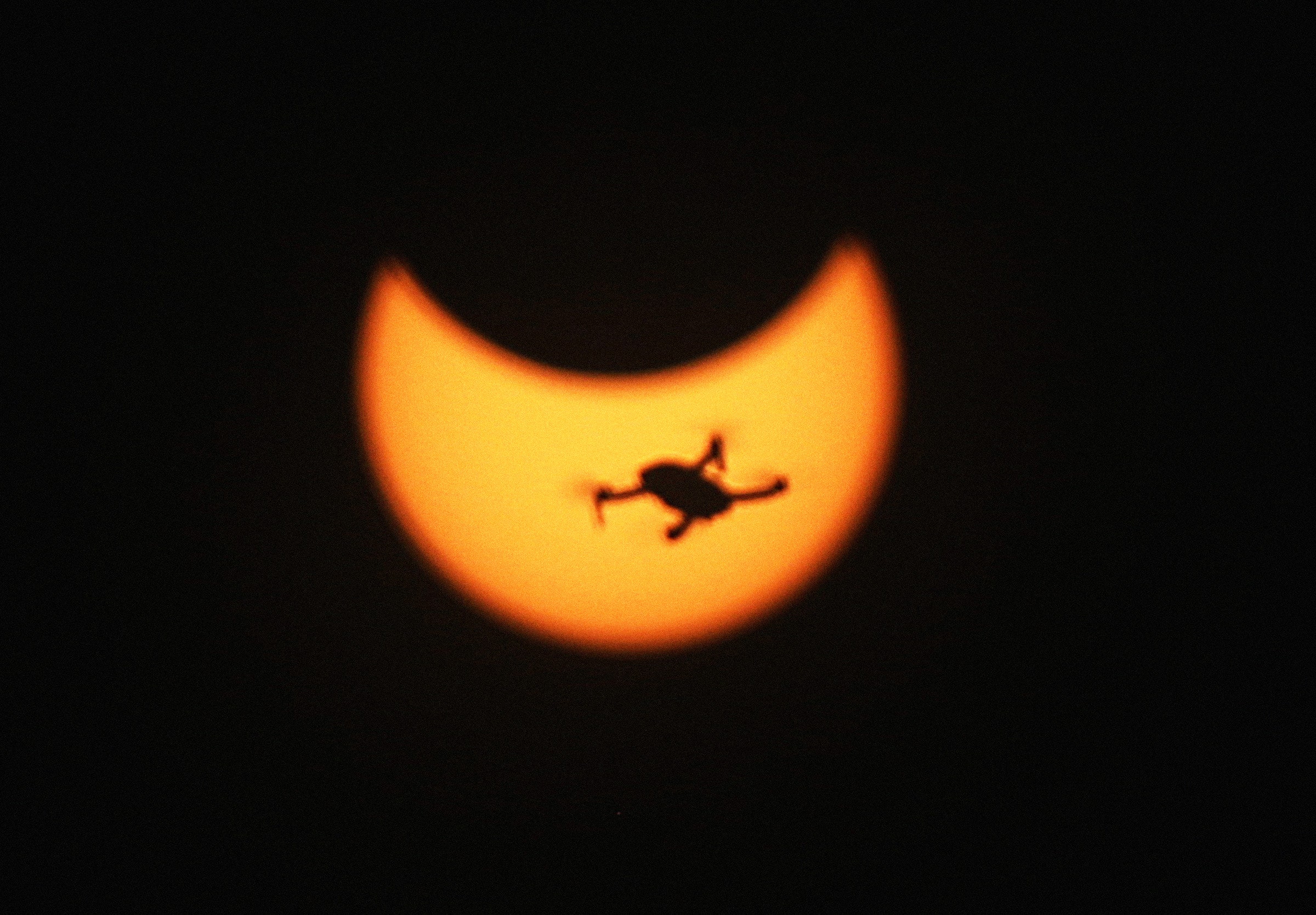In the span of just a few years, drones have become instrumental in warfare. Conflicts in Ukraine, Iran, Nagorno-Karabakh, Sudan, and elsewhere have shown how autonomous vehicles have become a quintessential part of modern combat.
It’s a fact that Taiwan knows all too well. The island nation, fearing imminent invasion from China, has both the need, know-how, and industry necessary to build a robust and advanced drone program.
Yet Taiwan, which has set an ambitious target of producing 180,000 drones per year by 2028, is struggling to create this industry from scratch. Last year, it produced fewer than 10,000.
“Taiwan definitely has the ability to make the best drones in the world,” says Cathy Fang, a policy analyst at the Research Institute for Democracy, Society, and Emerging Technology (DSET).
So why doesn’t it?
Designing a Hellscape
Fang and her colleagues published a lengthy report on June 16 that reveals just how sluggish Taiwan’s drone industry has been. According to their research, the country has produced between 8,000 and 10,000 unmanned aerial vehicles (UAVs) over the past year, with “structural challenges” standing in the way of the current rate and the ambitious goal. Their study found that Taiwan’s drone production has been stymied by “high manufacturing costs, low domestic procurement, and minimal foreign government orders.”
Fang and other DSET researchers briefed WIRED on the details of their report in their Taipei offices in May.
Taiwan has lived under the threat of Chinese invasion for decades, but recent years have turned it into a more immediate possibility. Beijing has made clear that it intends to complete its aggressive modernization of the People’s Liberation Army by 2027; Taiwanese officials say invasion could come that early but almost certainly before Premier Xi Jinping’s current term in office ends in 2029.
While there are competing views about what form, exactly, Chinese military aggression could take, military analysts in Taiwan fear it could be a full combined arms onslaught: From air and sea at first, followed by a full land invasion.
That means Taiwan has an imperative to come up with innovative solutions to defend itself, and fast. As one American commander remarked in 2023, Taiwan’s self-defense will mean turning the Taiwan Strait into a “hellscape”—bombarding incoming Chinese ships and planes with swarms of uncrewed aerial and naval vehicles. This strategy doesn’t need to destroy the considerable Chinese navy and air force outright, but it does need to frustrate Beijing’s advances long enough for Taiwan’s allies to rally to its defense.
Taipei is already doing some of this right. In 2022, the government launched the Drone National Team, a program meant to match government and industry to scale up the nascent field. In particular, the team was dispatched to learn lessons from Ukraine, whose defensive strategy has relied heavily on small, tactical, cheap UAVs capable of carrying out multiple missions and integrating closely with ground units. Today, the country boasts a massive domestic drone industry, with Kyiv planning to buy 4.5 million small drones this year, on top of its long-range uncrewed missile program, its autonomous land vehicles, and its uncrewed naval drones.
But Ukraine also shows the disadvantage at which Taiwan finds itself. In a secret workshop in Kyiv, a Ukrainian drone maker told WIRED that he had no choice but to source his antennas and chips from China. Taiwanese chips were too expensive.
Competing With DJI
“We are not able to compete with DJI,” Fang says, referring to the massive Chinese drone manufacturer.
Other countries that have scaled up their drone programs recently have accepted Chinese technology in their supply chain—either as an asset or a necessary evil. But Taiwan, for obvious reasons, is leery of including any Chinese tech.
That makes drone manufacturing hard. China maintains a massive advantage in producing certain critical pieces of these UAVs—including the gimbals, optical sensors, and antennas. To buy that equipment, Taiwan needs to find allied suppliers, often at considerable cost.
Taiwan has even had difficulty leveraging its advantages. The country has an advanced battery industry, for example—but it’s heavily reliant on Chinese critical minerals. The island nation also boasts the world’s most impressive semiconductor industry: It produces 60 percent of the world’s semiconductors and 90 percent of the advanced semiconductors. But, Fang says, Taiwan does not produce any chips specifically for use on drones.
“Taiwanese drone makers are buying chips from Qualcomm and Nvidia, but those chips are not specifically for drones,” she says. “Those are communication chips, sensor chips, those are for more general use.” And even those general chips are significantly more expensive than their Chinese competitors, sometimes by a factor of 10.
“We definitely have the ability to make them,” Fang adds. “But the reason why these companies are not involved in this market is because the scale is just too small.”
It’s a catch-22: Taiwanese companies can’t increase production and reduce costs until they get more orders, but they can’t get more orders because their costs are too high.
“We need more government procurement from Taiwan itself,” Fang says. Thus far, the nation’s defense ministry has ordered fewer than 4,000 drones, although it plans to purchase tens of thousands more in the years to come. It owes to the fact, analysts say, that financing the kind of defense spending that Taiwan needs remains politically difficult. Earlier this year, opposition lawmakers in the Legislative Yuan passed a budget that slashed planned defense spending.
If Taiwan’s industry has any hope of growing by the scale the country needs, Fang says there’s a clear answer: America.
Building an Army of Drones
DSET has a number of recommendations, both for Taiwan and America, on how to establish this ambitious new industry. For starters, they argue, America needs to start actually supporting Taiwan’s local industry.
To date, no Taiwanese drone manufacturer has secured access to the Department of Defense’s “blue list”—its roster of trusted drone suppliers. Earning a spot on that list could mean millions or billions of dollars in orders from the Pentagon.
There has been some trade in the other direction. The US has supplied Taiwan with about 1,000 drones, mostly the smaller AeroVironment Switchblade loitering munition as well as a small number of the MQ-9 Reaper long-range drones.
The US has also been shipping some novel technology to Taiwan, including access to its Replicator Initiative: an autonomous drone swarm capability designed to find and destroy targets at sea.
But, DSET argues, some of these capabilities have been more a product of what the US thinks Taiwan needs. Washington could be more effective if it developed partnerships with Taiwanese industry, DSET contends, and make longer-term decisions about what Taipei needs for its self-defense. Finally, DSET writes, Washington should drop its tariffs—on Taiwanese UAVs, at the very least.
Taiwan itself has even more work to do. DSET recommends establishing a more detailed roadmap for what capabilities it wants and needs and how it intends to get there. While plenty of focus will be on the small, first-person-view drones—the kind increasingly ubiquitous in conflicts worldwide—Taiwan will need to expand into other kinds of technology.
While Taipei has identified a wide range of capabilities it hopes to acquire, DSET found it has been mostly procuring smaller surveillance drones.
Both Russia and Iran have recently shown how long-range uncrewed vehicles can be made at scale and significantly cheaper than traditional missiles. Perhaps more importantly, the DSET report argues, Taiwan needs to be able to plug into American needs and procurement programs—and America prioritizes longer-range systems.
The preponderance of these drones has also heightened the need for defenses, particularly around electronic warfare. Taipei is investing in anti-drone systems, Fang says, but it remains an “emerging concept.” (A defense analyst told WIRED that Taiwan is simply “not prepared to fight in a complex electromagnetic environment.”)
One of the weak points in China’s invasion will be its landing crafts. Beijing has been feverishly building a fleet of barges that would be able to transport troops and tanks across the Taiwan Strait. Taiwan has been developing domestically made submarines with the hope of sinking those barges before they arrive—that capability would be augmented significantly by autonomous or uncrewed submersibles.
Ukraine has pioneered its own models of semiautonomous uncrewed naval vehicles, which have successfully sunk Russian warships and damaged the Kerch Bridge in Crimea.
As Western nations get ambitious about how to mass-produce cost-effective and high-impact defense strategies, many are looking toward uncrewed vehicles as a silver bullet. But, as Taiwan shows, this is all easier said than done.
If Taiwan gets this wrong, DSET argues, “Taiwan risks falling into a gray zone of limited interoperability and unscalable production.” Meanwhile, “the US risks failing to develop trusted regional manufacturing capacity at the speed required to compete with China’s drone diplomacy and defense exports.”
It may seem like an insurmountable challenge, especially for a nation facing an existential threat from a much bigger neighbor. But, as Fang points out, Ukraine was in the same situation. “Ukraine? They didn’t even imagine that kind of capacity three years ago,” she says. But a “sense of survival” kicked in, and Kyiv stood up the world’s most impressive indigenous drone manufacturing industry.
Taipei “is, right now, in low mode,” Fang says. “Because we are still not at war. But I don’t want to underestimate our capacity, even though we are in a peacetime.”


